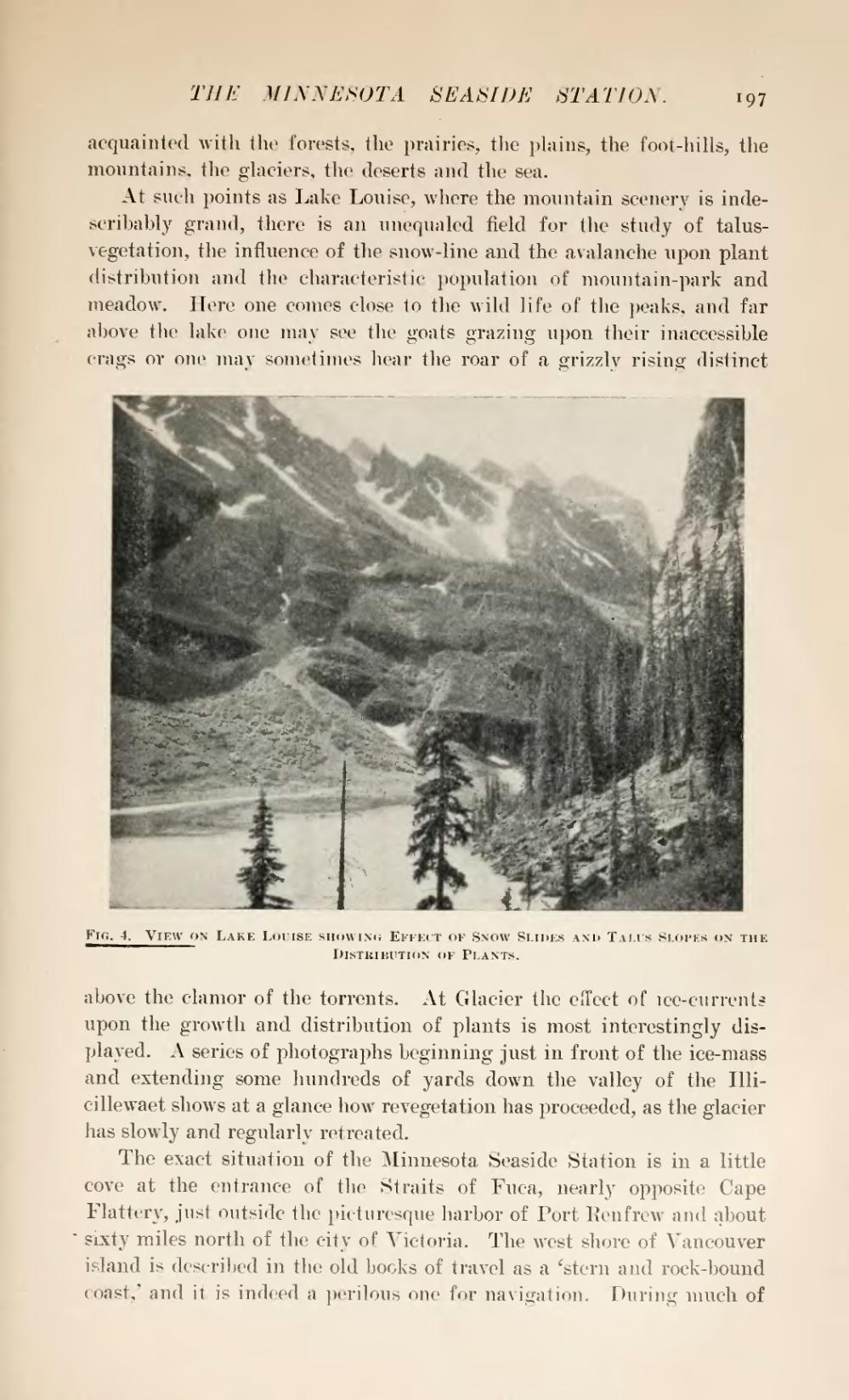acquainted with the forests, the prairies, the plains, the foot-hills, the mountains, the glaciers, the deserts and the sea.
At such points as Lake Louise, where the mountain scenery is indescribably grand, there is an unequaled field for the study of talus vegetation, the influence of the snow-line and the avalanche upon plant distribution and the characteristic population of mountain-park and meadow. Here one comes close to the wild life of the peaks, and far above the lake one may see the goats grazing upon their inaccessible crags or one may sometimes hear the roar of a grizzly rising distinct

above the clamor of the torrents. At Glacier the effect of ice-currents upon the growth and distribution of plants is most interestingly displayed. A series of photographs beginning just in front of the ice-mass and extending some hundreds of yards down the valley of the Illicillewaet shows at a glance how revegetation has proceeded, as the glacier has slowly and regularly retreated.
The exact situation of the Minnesota Seaside Station is in a little cove at the entrance of the Straits of Fuca, nearly opposite Cape Flattery, just outside the picturesque harbor of Port Renfrew and about sixty miles north of the city of Victoria. The west shore of Vancouver island is described in the old books of travel as a 'stern and rock-bound coast,' and it is indeed a perilous one for navigation. During much of
